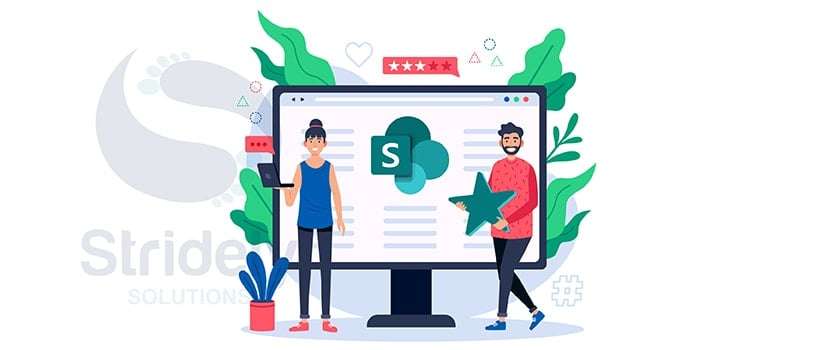Microsoft always manages to stay at the top of the industry with innovations and enhancements. It starts with designing solutions for a problem and then, adding more features to optimize the functionality of the same.
A similar trend is in the process as Microsoft comes up with an update rather than an addition to the SharePoint family. Primarily designed to be the document management platform, Microsoft SharePoint collaborates with Microsoft Office facilitating the creation, modification, and sharing of files, enterprise-wide.
A new addition has been the feature of Audience Targeting that aims to improve and enhance the overall SharePoint experience. While most of the SharePoint Online focuses on filtering the editing experience and helping members publish posts without much obstruction, the concept of Audience Targeting focuses on improving the end-user experience.
So, what is Audience Targeting?
What is Audience Targeting In SharePoint Online?
Audience Targeting as the name suggests is one way to target content towards a specific user. The content displayed is in a manner that fits best the user profile. Even though the concept of audience targeting has been within the software for long, it is now that Microsoft has enabled used based linking of content.
Consider, for example, there is a piece of content that you want only the Financial Department to view, edit and modify. Until now, the only way to achieve the above was to create a separate page and then share the profile with the department. However, this method isn’t effective when they are multiple pages to share with a different set of users. This is where the concept of audience targeting comes in. It allows you to use the same site page, embed certain rules and then, enhance the visibility by targeting it to a dedicated group of users.
With the new SharePoint Development, you can now target content to a specified group of audience. What happens here is you can create groups or systems based on Active Directory and once significant user groups have been formed, you can then assign library items of SharePoint to that particular group. One thing to note here is that the documents or files shared would be visible only to the members of the group.
Another advantage of using the SharePoint Online’s Audience Targeting feature is the ease to target links of site navigation to the desired audience. This enhances the end-user experience as they would see only those links that are relevant to the user.
How the Audience Targeting Simplifies Management and Sharing?
Audience targeting helps prioritize content and share it with the ideal user. Apart from this, SharePoint Online’s Audience Targeting feature embeds high-level description. Using this feature, you can better outline the position of articles as well as the news pages on the site. It becomes easier to configure the entire site visibility and personalize the same.
In simple terms, Audience targeting eliminates the need to create multiple pages for different users. Instead, you can customize a single page to display information based on the user’s interest. Audience Targeting thereby enables one to personalize a centralized home page to map the interest of the user.
Another benefit of the said feature is data collection. Earlier, dedicated forms were used to gather user data. However, these weren’t competent, not to forget the series of steps one had to follow. On the other hand, Microsoft’s built-in platform for data collection eases the process by which data is gathered as well as analyzed. They not only streamline the process of data collection but also help categorize data, as per the audience preferences.
Audiences are picked based on the SharePoint groups, the security group or the distribution list and the global audience.
Enabling Audience Targeting
Knowing all about the features of audience targeting, we now see how to enable rather where can we enable audience targeting while using SharePoint online.
-
Navigational Links
Use audience targeting to promote links to dedicated audiences throughout the site’s navigation which includes navigation across hub and footer.
-
News Web Part
Apart from the mobile app and the start page of the site, the news web part allows embedding audience targeting features to promote posts to particular audiences.
-
Pages
Specific pages can be sent to or targeted to audiences as defined in the page library.
-
Highlighted Content
Share parts of content from the site or a page using the audience targeting feature.
Things To Consider: Best Practices When Enabling Audience Targeting
True that audience targeting in an exclusive feature that makes sharing personalized content to a specific audience easier and better. However, simply enabling the feature would do no good. It is important to be cautious about the manner in which you move ahead with the feature.
- Even though there are four different ways you can enable the feature of audience targeting, currently the feature is applicable to highlighted web content and news part.
- Using the Audience targeting feature, you can bulk edit the property of the audience either on the library or the site page library.
- Do not mistake the feature of audience targeting with security trimming. In case, you wish to trim your content and display only a few parts of the content to the audience, you would need to manually trim the content rather security trim it to be sure that the parts visible are only the ones permitted to be viewed.
- Once you target the content/news or any page to a particular group of audience, no matter if the one visiting the page is the site collection administrator, he/she would not be able to view the content. Only users that are part of the targeted group can view the content.
Conclusion
To end our discussion, Audience Targeting is an excellent feature that makes it easier for the editor to share and collaborate documents with a particular user. In case, you have been building a new rather a modern SharePoint site for your enterprise, integrating the audience targeting feature would be ideal.


